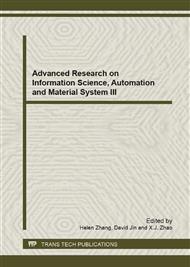p.304
p.308
p.312
p.319
p.324
p.328
p.332
p.336
p.340
Industrial Carbon Emissions Accounting from Energy and Non-Energy Consumption and Input-Output Model Construction for Trans-Sector Carbon Emissions Shift Assessment, China
Abstract:
This paper describes an industrial energy combustion use and industrial process emissions accounting method. By utilizing three set of widely used energy combustion carbon emission factors, Chinas industrial energy consumption carbon emissions are calculated. By using the methods provided by the IPCC, the industrial process carbon emissions for extractive industries, chemical industries and metal industries are calculated. The results show that in 2010 China's industrial energy consumption carbon emissions reached approximately 6.91×108 t C (2.53×109 t CO2), 85% from coal burning. The industrial process emitted approximately 9.47×108 t C (3.48×109 t CO2). About 5.55×108 t C (2.04×109 t CO2) is emitted by providing heat and power to industrial processes. In addition, this paper also proposed an improved model coupling industrial carbon emissions data and input-output analysis. It will help to quantify and evaluate the trans-sector carbon emissions shift.
Info:
Periodical:
Pages:
328-331
Citation:
Online since:
June 2013
Authors:
Price:
Сopyright:
© 2013 Trans Tech Publications Ltd. All Rights Reserved
Share:
Citation:


